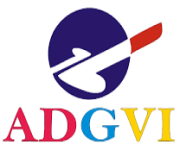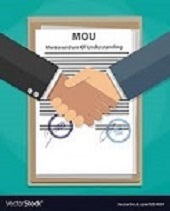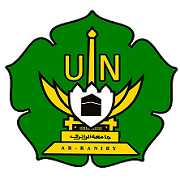Online Submissions
Already have a Username/Password for Circuit: Jurnal Ilmiah Pendidikan Teknik Elektro?
Go to Login
Need a Username/Password?
Go to Registration
Registration and login are required to submit items online and to check the status of current submissions.
Author Guidelines
AUTHOR GUIDELINE AND SUBMISSION
If you would like and interest to submit an article to CIRCUIT, please visit our website (http://jurnal.ar-raniry.ac.id/index.php/circuit) and create an author login account. The online system will guide you through the steps to upload your articles. The selected articles will be assessed by the editors and reviewers.
General Guideline
The Circuit Journal is published twice a year (the first issue was February and August).
The articles which are selected must be in original ideas, scientific articles, and never published or submitted to any other media.
The Circuit Journal manuscripts provide an original fundamental research, related to electrical engineering, electrical engineering education, and vocational education.
The papers are supposed to be written in English. Authors who feel their English language manuscript need require editing, Indonesian language writing are allowed.
Specific Author Guideline
The manuscripts should be in 10-20 pages, consist of an A4 paper (quarto).
The margin text are 3 cm from the left, right, top and bottom. The articles in written in Microsoft word, single space, Arial 10.
The framework writings should include title, author's name, affiliations name and author's email.
The title: concise, informative and descriptive. Avoid abbreviations and formulae.
Author name and affiliations: please clearly write the given name(s) and family name(s). Indicate all the affiliation writing with capitalize-each word letter. Provide the full postal address of each affiliations, including the country name and email address.
Abstract: a concise and factual description of approximately 150 words. The abstract should state a clear statement, briefly the purpose of the research, the principal result, conclusion and recommendation. No literature and references inside the abstract, and also non-standard or uncommon abbreviations should be avoided.
Keywords: a point word must immediately state after the abstract, maximum of 6 keywords, avoiding general and plural terms.
Introduction: begins with a definition or objectives of the experiment being performed. Please state the objective of the work and provide an adequate background. In addition, write briefly introduction, including the objective goals, the purposes, the context, provide a focus, clear each of purpose statement.
Literature Review: literature review should explain the difference of the articles compare with other articles. If the articles was kind of report, the review should have overall opinion and general observation of its essential topic. The author should support the report with some judgments that both editors and reviewers are able to understand the reasoning of the authors comment in the report.
Method: this part describes the important steps of the research or experiment. The author should provide clearly steps in the methodology. Please write into a paragraph text, not a numbered text or bulleted statements.
Result and Discussion: this section are presenting the data, the result, and what does the data mean. After the author summarized the data both on the table or paragraph, the author should continue analyze the data findings. The authors are allowed to use their opinion and intellectual mind. The result and discussion may explain any problems or limitation that the author/s found in the research/experiment, show how the problems affected the data findings. Please use positive statements to emphasize the result.
Conclusion: the author could summarize the finding and explain the implication of the research/report. Please not put any table and figures. The author may put some recommendation to improve the findings or suggestion for future research/report. The conclusion and recommendation may obtain 1-2 paragraphs with less repeating of the major findings.
References: The main references are international journals and proceeding. All references should be to the most pertinent and up-to-date sources. References are written in American Psychological Association (APA) 6th edition Style. Please use a consistent format for references see examples below
Books with one or more authors:
Grant, August and Jennier,H (2018). Communication Tecnology Update and Fundamentals. Oxford: Focal Press.
Journal Article:
Hadijah, Sri & Rizalia, Syarif (2018). Pola Komunikasi Organisasi dalam Meningkatkan Motivasi Kerja pada Fakultas Ushuluddin Adab dan Dakwah. Jurnal Al-Munzir, 11(1), 38-43.
Thesis and Dissertation:
Sehfudin,Arif (2011). Pengaruh Gaya Kepemimpinan, Komunikasi Organisasi dan Motivasi Kerja Terhadap Kinerja Karyawan. Semarang: Universitas Diponegoro.
In notes and Bibliography must be written in APA (American Psychological Association). Citation Style. Please use reference applications such as Mendeley, Zotero, etc. (we suggest using Mendeley). Citation Bibliography is allowed in terms of format as below (Shannon, Claude E., & Weaver, 2008).
Submission Preparation Checklist
As part of the submission process, authors are required to check off their submission's compliance with all of the following items, and submissions may be returned to authors that do not adhere to these guidelines.
The submission has not been previously published, nor is it before another journal for consideration (or an explanation has been provided in Comments to the Editor).
- The submission file is in OpenOffice, Microsoft Word, RTF, or WordPerfect document file format.
- Where available, URLs for the references have been provided.
The text is single-spaced; uses a 12-point font; employs italics, rather than underlining (except with URL addresses); and all illustrations, figures, and tables are placed within the text at the appropriate points, rather than at the end.
The text adheres to the stylistic and bibliographic requirements outlined in the Author Guidelines, which is found in About the Journal.
If submitting to a peer-reviewed section of the journal, the instructions in Ensuring a Blind Review have been followed.
Copyright Notice
Authors who publish in this journal agree to the following terms:
- Authors retain copyright and grant the journal right of first publication with the work simultaneously licensed under a Creative Commons Attribution License that allows others to share the work with an acknowledgement of the work's authorship and initial publication in this journal.
The Journal uses license CC-BY-SA or an equivalent license as the optimal license for the publication, distribution, use, and reuse of scholarly works.
Authors are able to enter into separate, additional contractual arrangements for the non-exclusive distribution of the journal's published version of the work (e.g., post it to an institutional repository or publish it in a book), with an acknowledgement of its initial publication in this journal.
- Authors are permitted and encouraged to post their work online (e.g., in institutional repositories or on their website) prior to and during the submission process, as it can lead to productive exchanges, as well as earlier and greater citation of published work (See The Effect of Open Access).
Privacy Statement
The names and email addresses entered in this journal site will be used exclusively for the stated purposes of this journal and will not be made available for any other purpose or to any other party.
Author Fees
This journal charges the following author fees.
Article Submission: 0.00 (IDR)
Authors are not required to pay Article Submission fee as part of the submission process.
Article Publication: 300000.00 (IDR)
If this paper is accepted for publication, you will be asked to pay an Article Publication Fee to cover publications costs.
If you do not have funds to pay such fees, you will have an opportunity to waive each fee. We do not want fees to prevent the publication of worthy work.


























